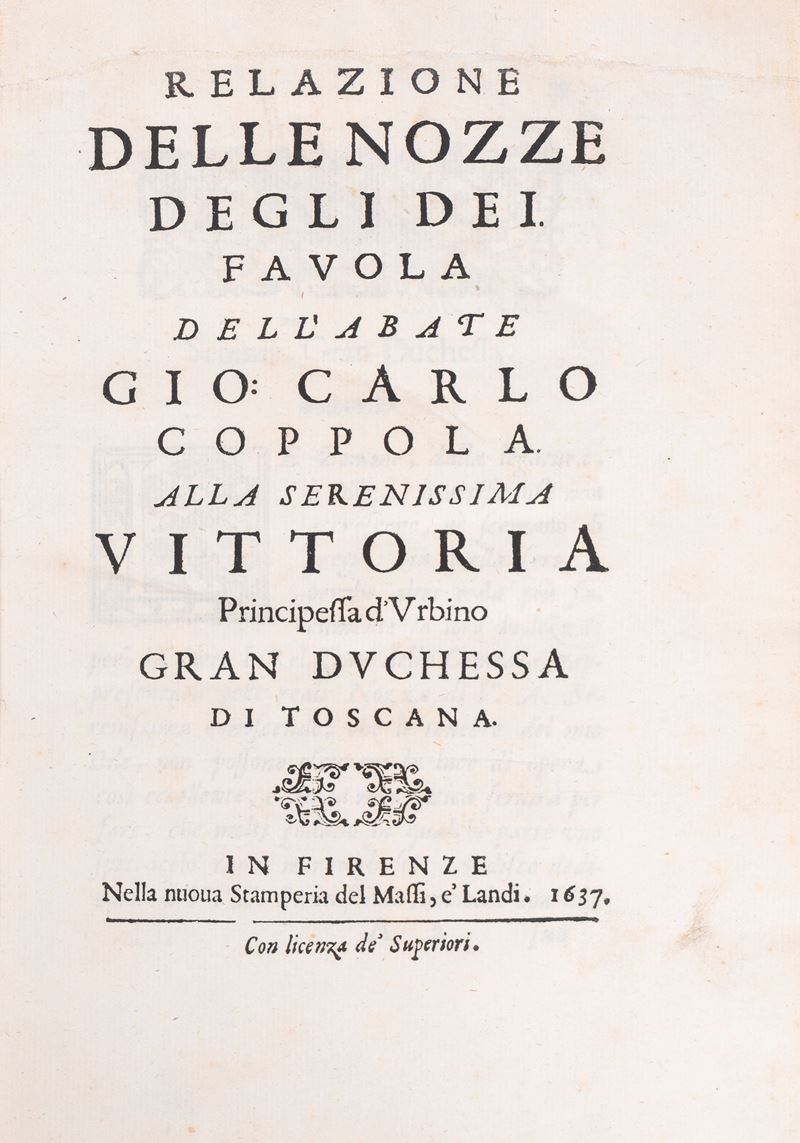Information
Specialist Notes
Giovanni Carlo Coppola (1599-1651) was the librettist of a fable about the marriage of the gods Venus and Vulcan, Jupiter and Juno (in heaven), Neptune and Amphitrite (in the sea), and Pluto and Proserpina (in the underworld). The music was composed by Marco da Gagliano, choirmaster of the Medici court, but in reality five composers were commissioned to contribute, with Ferdinando Saracinelli, to the direction. Agnolo Ricci was the choreographer of the various dances that accompany the drama, and Alfonso Parigi designed the sets (including the elaborate stage machinery). These sets are reproduced on the folding plates and give an idea of the grandeur of the production.
Coppola's libretto forms the first part of the opera, while the second part is a description, attributed to Rondinelli, of the production as a whole, an extremely rare account of early operatic stagecraft. We learn, for example, that the production had some 150 singers and at least 25 dancers. Furthermore, this appears to be the first recorded use of the word "opera" to mean a musical drama, rather than "opera," which is its literal translation; the Oxford English Dictionary places the first use in this sense two years later, in 1639.
Brunet, II, 262; Clubb 311; The Place of the Theatre in Florence, pp. 139-143; Nagler, Theater Festivals of the Medici, pp.162-74; The New Grove Dictionary of Opera, III, 855.
Contact
Condition report
Suggested lots
Caricamento lotti suggeriti...
More Lots













